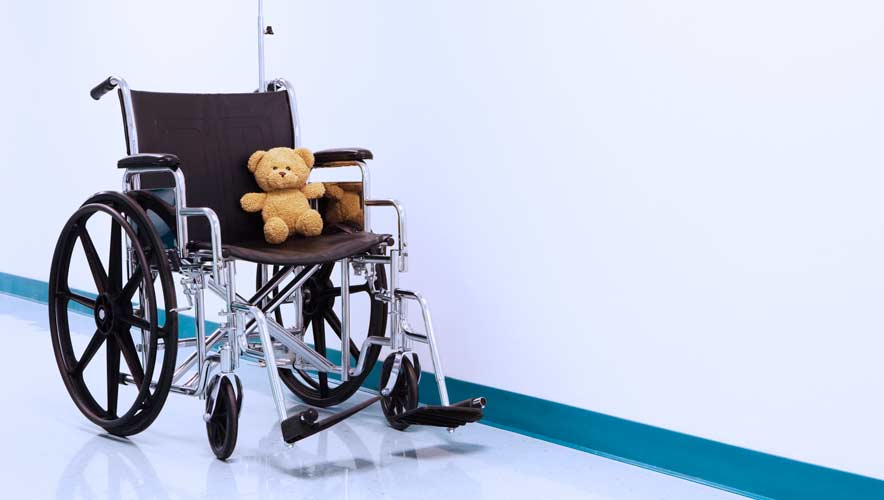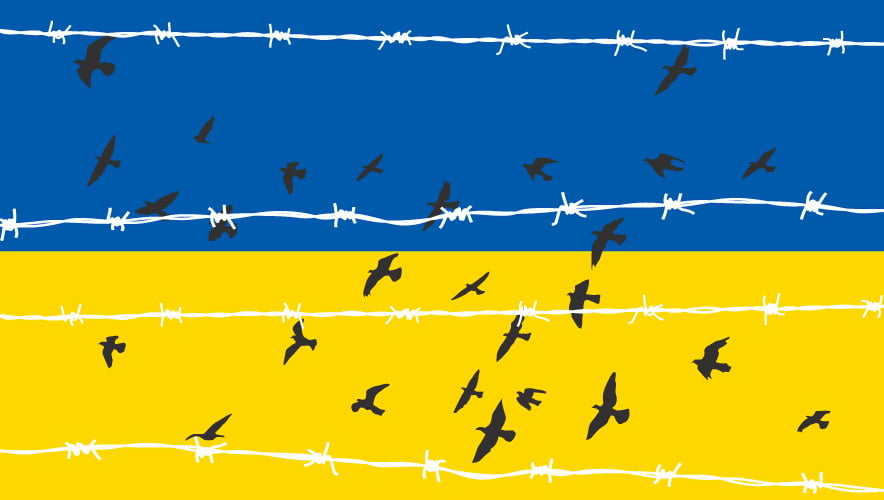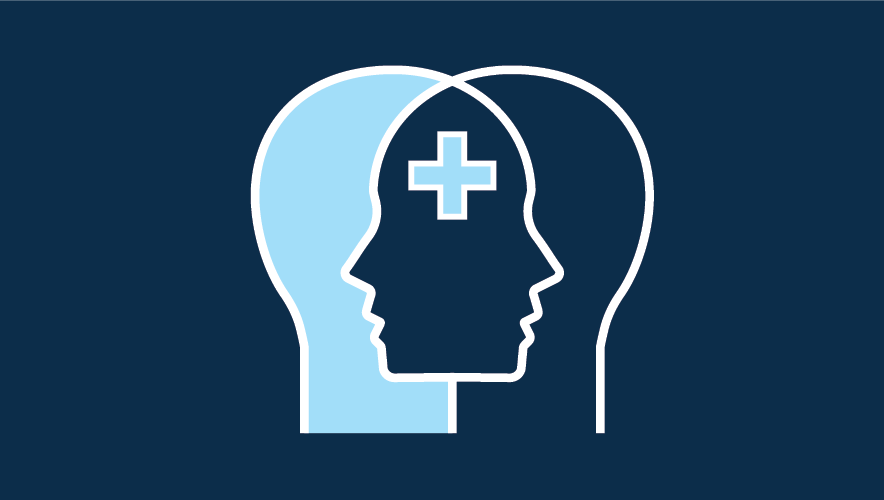How to Train Healthcare Teams to Detect and Support Human Trafficking Victims
Human trafficking is not limited to a single country, gender, race, or even industry. It is modern-day slavery, and it takes place in every country and state.
In the mainstream, the term often evokes thoughts of sex trafficking; however, human trafficking stretches beyond sexual exploitation. It can also take the form of labor exploitation, such as child soldiers, unpaid domestic servitude, and forced labor in various industries—agriculture, commercial fishing, construction, hospitality, janitorial services, nail salons, street begging or panhandling, and many more. Human trafficking can also lead its victims into organ harvesting, forced marriage, and coerced criminal activity, according to a 2017 study published in the Advanced Emergency Nursing Journal.
Although victims can come from various walks of life or regions, some individuals stand a greater risk than others.
“Significant risk factors include recent migration or relocation, substance use, mental health concerns, involvement with the child welfare system, and being a runaway or homeless youth,” according to the Polaris Project, an organization that provides data and training on human trafficking and its reduction for researchers, academic, advocates, and law enforcement.
Part of the issue in combating this form of slavery stems from the difficulty in tracking it. The International Labor Organization (ILO) figured in 2012 that globally an estimated three in 1,000 persons are trafficked, and that traffickers generate $150 billion in revenue.
The U.S. Department of State estimated in 2006 that 14,500 to 17,500 foreign nationals were annually trafficked into the country. This does not account for U.S. citizens or residents who are trafficked. The Polaris Project noted that the U.S. National Human Trafficking Hotline received 10,583 reports that identified 16,658 individual victims in 2020. However, Polaris said that this is likely only a fraction of the industry in the United States.
“Globally, victims tend to be trafficked within the same region or subregion, typically from poor to more affluent countries,” Lisa Hackey and Julia Phillippi wrote in the 2017 study,“Identification and Management of Human Trafficking Victims in the Emergency Department,” published in the Advanced Emergency Nursing Journal.
Individuals can be funneled and forced into a human trafficking pipeline through coercion, fraud, or force. And scenarios where someone is forced to become a victim of human trafficking often include at least some element of kidnapping, physical violence, torture, sexual assault, rape, or drugging the victim.
“Victims are exploited for the economic gain of traffickers, isolated from support systems, hidden from mainstream society, and often endure unpredictable physical, psychological, and sexual assaults,” Hackey and Phillippi wrote.
The abuse victims are subjected to results in the intersection of human trafficking and the healthcare industry, especially when victims are brought to healthcare facilities to get treatment for injuries, sexually transmitted diseases, or other issues.
But healthcare workers can often miss the signs that a patient may be a victim of human trafficking. Jessica Muñoz, a nurse practitioner in Hawaii, notes that most trafficking victims interact with a healthcare provider nine separate times before being identified as a trafficking victim. In an interview with Security Management, Muñoz says that about 14 years ago she began to focus on the intersection of human trafficking and healthcare, triggered by seeing that local youths were coming into the emergency room where she worked but were not immediately identified as trafficking victims.
“Most healthcare professionals were missing it because it would often present as truants, delinquents, runaways, substance users, or they’d present with their perpetrator, who they claim to be a boyfriend or an uncle,” Muñoz says.
In a 2014 U.S. study, cited by Hackey and Phillippi, researchers found that 87.8 percent of sex-trafficked victims attempted to receive treatment from the healthcare system (the majority via a hospital emergency department), but staff either did not realize they were victims or did not offer assistance. A separate study of healthcare practitioners indicated that the primary reason for a lack of intervention is ignorance in how to identify and/or respond to trafficking, according to Hackey and Phillippi.
Globally, victims tend to be trafficked within the same region or subregion, typically from poor to more affluent countries.
Impacts to healthcare professionals and staff that find themselves dealing with victims of trafficking manifest in various ways. Sometimes, the danger can be subtle or long term, such as through stress that triggers psychological or physical health issues, including anxiety, cancer, heart disease, and diabetes.
“Any time our bodies are put in those high stress situations, it manifests in our bodies,” notes Sarah-Marie Baumgartner, a registered nurse and member of the International Association for Healthcare Security and Safety (IAHSS).
Staff may also experience vicarious trauma as they assist or try to help victims.
“That’s something that healthcare workers deal with on a daily basis,” Baumgartner says. “You’re not the one that is experiencing the circumstance, but you are in a sense because you’re involved in that person’s care. So, you hear their story, you see that impact, and in some circumstances—especially in the emergency room—you may experience violence.”
Other, more violent consequences could occur if a trafficker decides to directly confront a healthcare worker because he or she is unhappy with the attempt to interfere with the victim.
These consequences will impact the facility at large and its stakeholders, such as an insurer. Insurance companies may see increased claims for staff experiencing anxiety, heart disease, or other long-term impacts, while violent events involving traffickers can result in staff members who need to take workman’s comp, Baumgartner notes.
This means that creating a policy to identify and address trafficking is crucial so no staff member is alone or ignorant in dealing with such situations.
Identification
Part of an effective system will stress importance on training not only security personnel, doctors, and nurses, but every person who might come into contact with a trafficking victim.
Some red flags to look out for can be either psychological or social in nature. These can include fake identification, restricted communication, a dominating partner who insists on speaking for the victim, hotel room keys, multiple foster or group homes, a history of running away from home, avoiding eye contact or other dissociative behavior, large amounts of cash or jewelry, and more.
Other red flags can be physical, such as drug abuse or use, fatigue, dizziness, pelvic discomfort or complaint, sexually transmitted illnesses, chronic pain, physical indications of assault or sexual assault, multiple visits to a healthcare facility, tattoos or brands on the neck or lower back that include someone’s name or initials, and more.
Baumgartner adds that it is common to see an intersection and overlap of victims of intimate partner violence and human trafficking, creating additional complexities in identification and intervention.
“There are a lot of people who are trafficked [by] their own family or somebody they’re married to, so you get kind of these gray areas,” Baumgartner says.
Baumgartner adds that having staff trained to identify sexual assault can also benefit a healthcare facility. One example she points to is the Sexual Assault Nursing Education (SANE) program, hosted by the International Association of Forensic Nurses.
The program “at least helps you identify those populations and teach you that kind of stuff, so you do know a little more about what the clinical process is,” Baumgartner says.
Interaction
Developing and implementing a program should aim to not only offer victims a safe way to leave a trafficker, but an equally important goal of maintaining the safety and protection of a facility’s staff. Both Baumgartner and Muñoz agree that these policies are highly collaborative. Not only will there need to be buy-in from healthcare administrators, operations, clinical administration, and security, but there needs to be coordination with local law enforcement and awareness about state and local laws regarding trafficking. Ultimately, the policy should be tailored to the facility.
“It comes down to: If we identify an adult who is being exploited, what are we going to do? Who is going to be notified?” Muñoz says.
Any time our bodies are put in those high stress situations, it manifests in our bodies.
The program should consider the clinical aspects and personnel in a facility. On top of requiring doctors, nurses, and other clinical staff to receive training in identifying victims, there must be a chain of command with clear indications as to who must be notified and takes a lead when a victim is identified, according to Muñoz.
The program must also establish thresholds or triggers for when to notify internal security and law enforcement. One instance where security should be involved, or at least aware of the circumstances, is when a victim is separated from a perpetrator or if healthcare staff have decided to prevent the perpetrator from further interacting with the victim.
“That’s when you’re going to want to get security involved. You’re going to want to get law enforcement involved because you need a higher level of security there in case things go south,” Baumgartner says. “You want to have all of that in place before you intervene.”
And even in instances where the victim does not want law enforcement involvement and decides he or she is not ready to leave the trafficker, it is still prudent to loop in security and law enforcement stakeholders so they are aware of the person’s status because he or she may return with company. “They can bring with them some unsavory people that could jeopardize the safety of the hospital,” Muñoz cautions.
Coordination with external stakeholders should also take into account other components of a facility’s community—such as local domestic violence shelters or anti-trafficking organizations.
“You can’t intervene until you know what those community resources are—understanding those community resources and what you do and don’t have the capacity to do,” Baumgartner says.
Overall, human trafficking response programs should consider leading with a trauma-informed approach, focusing on connecting with a patient who may be a trafficking victim through empathy. People from multiple departments, both internal and external to a healthcare setting, will need to interact with a victim, so everyone needs to be on the same page, Muñoz said.
If a nurse, doctor, or other healthcare worker says the wrong thing to a victim, it can retraumatize the person and result in him or her returning to the trafficker, Muñoz said in a presentation at the International Association for Healthcare Security and Safety (IAHSS) conference earlier in 2022.
“Recognizing victims and victimization, it is so important that there is sensitivity and empathy. We don’t want to retrigger and traumatize. I think with healthcare security personnel, they don’t want to be part of the problem, they want to be part of the solution,” Muñoz says.
Muñoz is also the president of Ho‘ola Na Pua, an organization that offers girls under the age of 18 who were trafficked a safe haven to process trauma and to create a foundation for a life beyond human trafficking.
Letting someone know that a hospital, clinic, or other healthcare facility is a safe space stems from respecting the victim’s experiences and using conversations with the victim to set the right tone. Muñoz recommends maintaining eye contact and being genuine and authentic with the patients—which actively lets victims know they are seen and heard. It also lets a victim know that he or she is not being shamed for his or her role in trafficking—instead, the victim should pick up on compassion and equity.
Using certain words or methods in communicating with a victim needs to extend beyond the emergency room.
“Stopping, listening, and really being intentional and recognizing very subtle things, and maintaining that compassion and empathy,” Muñoz says, noting that these soft skills can support victims.
Active listening and interviewing techniques can support this effort and help security or clinical staff determine any potential threats to the facility. These can help healthcare staffers to understand why and how some victims experience and process trauma, such as the brain protecting itself by forgetting or burying painful memories.
Another soft skill to encourage is understanding how traffickers manipulate their victims. “A lot of people who are being trafficked are told, ‘Don’t tell anybody, they’re going to arrest you,’” Baumgartner says.
This feeds victims the notion that they need to lie to law enforcement, as well as healthcare workers.
“Being trauma-informed gives us that understanding and patience to realize that people aren’t going to be successful leaving until they’re ready,” Baumgartner notes.
Active listening and counteracting manipulations can be supported with consistent follow-through from healthcare providers. Over-promising an outcome can result in driving the patient back to his or her trafficker.
“It’s setting realistic expectations on what you’re able to do, what clinical stuff you’re able to do, and what realistic expectations of what you want that victim to participate in,” Baumgardner says.
Again, these soft skills support trauma-informed care efforts by focusing on the victim, Baumgartner explains. Whereas a traditional reactive response from a healthcare staffer, such as a member of the security team or a nurse, often features the worker categorizing the victim into a box that fits with the employee’s assumptions, trauma-informed care aims to give victims the space and time to control their own outcome.
Victims will need to have a say and input on what they want the outcome to be, including on when they want to leave their trafficker.
“Maybe they don’t feel safe yet to leave their trafficker. ...It’s making sure that the interventions that you’re putting in place are what the victim wants and what they need at that time, making sure that you’re following the laws and doing what you can within the law, and really empowering the victim and empowering your staff,” Baumgartner says.













